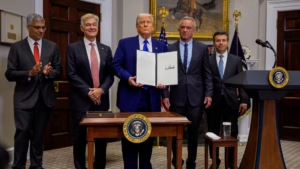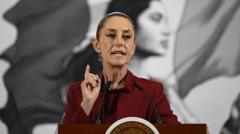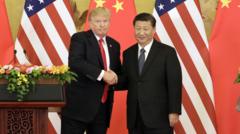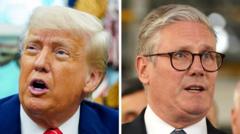The new executive order serves as a significant move to alleviate the financial burden of healthcare on American citizens, particularly seniors and low-income families. By mandating pharmaceutical companies to reduce prices or face repercussions, this initiative highlights the ongoing struggle against the inflated cost of medications. Critics remain cautious about its legality and impact on innovation, while the Trump administration prepares for potential follow-up reforms.
Trump's Bold Move: Executive Order to Lower Prescription Drug Prices

Trump's Bold Move: Executive Order to Lower Prescription Drug Prices
In a decisive action, President Trump has issued an executive order to tackle prescription drug costs, demanding price cuts from pharmaceutical companies.
President Donald Trump initiated a game-changing approach to the prescription drug industry this week by signing an executive order that offers pharmaceutical companies a stark choice: reduce their drug prices voluntarily or be compelled to match the lowest prices set in other developed nations.
This order comes in response to long-standing price disparities that have left American consumers reeling. The directive sets a 30-day timeline for companies to implement significant reductions in drug prices or else the administration will proceed with legislation to tie U.S. drug costs to the lowest international prices.
The Trump administration is portraying this action as a necessary response to what many see as exploitative pricing practices in the pharmaceutical market. Historically, Americans have been charged much more for the same medications available at lower costs in other countries like Canada and many European nations. Trump has been vocal in his criticism of the pharmaceutical sector, calling it one of the least accountable industries in the economy.
Proponents of the executive order laud it as an appropriate fiscal responsibility and a moral imperative. Especially for seniors and those with lower incomes, prescription costs have soared faster than wages, making the need to curb Big Pharma’s pricing practices urgent. By opting for an executive order instead of waiting for congressional action, the administration is positioning itself as a forceful challenger of a fraught system.
Despite this ambitious move, critics express skepticism over the order’s durability against legal challenges and its potential to stifle pharmaceutical innovation. Nonetheless, White House officials view this action as a foundational step, with indications that further reforms—such as changes to supply chains and demands for greater transparency—might follow.
For countless Americans grappling with the financial strain of accessing essential medications, this executive order could signify a critical shift in healthcare policy and serve as a hallmark of the Trump administration’s campaign against corporate greed.




















